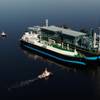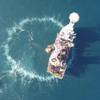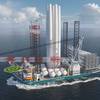Will 2024 Settle the Turbulence of US Offshore Wind?
There is no denying that 2023 was a challenging year for the U.S. offshore wind market. Citing macroeconomic factors including high inflation, rising interest rates, and supply chain bottlenecks, Ørsted announced on October 31 that they were ceasing the development of the Ocean Wind 1 and Ocean Wind 2 projects, which were scheduled for construction off the coast of New Jersey. Unfortunately, the troubling news has continued into the new year, with Equinor and BP announcing on January 3 that they had reached terms with the New York State Energy Research and Development Authority (NYSERDA) to terminate the Offshore Wind Renewable Energy Certificate (OREC) Agreement for the Empire Wind 2 project. Like Ørsted, Equinor stated that “commercial conditions driven by inflation, interest rates and supply chain disruptions” ultimately “prevented Empire Wind 2’s existing OREC agreement from being viable.” Fortunately, Empire Wind 1 remains in development, albeit at a much smaller scale with an installed capacity of only 816 megawatts (MW)as compared to Empire Wind 2’s potential generative capacity of 1,260 MW.
The cancellation of these projects and agreements by foreign developers, of course, has a cascading impact on the U.S. maritime industry and the American workforce. For example, concurrent with the termination of the Empire Wind 2 OREC Agreement, it was announced in early January that Great Lakes Dredge & Dock Corporation’s (GLDD) rock installation contract for the Empire Wind 2 project had also been terminated. Notwithstanding the contract’s termination, GLDD’s Jones Act-compliant Subsea Rock Installation Vessel (SRIV) remains under construction at Philly Shipyard. Indeed, it was only last July that President Joe Biden attended the steel cutting ceremony for GLDD’s SRIV at Philly Shipyard, highlighting the success of an “American owned, American operated” vessel with steel “being made by the United Steelworkers in Indiana”, an engine “made by the United States Electrical, Radio and Machine Workers in Pittsburgh”, and American mariners from Seafarers International Union.
Notwithstanding these challenges, overall political support for U.S. offshore wind development remains steadfast. The Biden Administration remains focused on its plan to deploy 30,000 MW of offshore wind energy by 2030. The Bureau of Ocean Energy Management (BOEM) continues its work in support of this goal, having completed the review of six offshore wind projects to date, including the aforementioned Ocean Wind 1 and 2 in New Jersey Empire Wind 1 and Empire Wind 2 in New York. Other BOEM-approved projects that appear to be moving steadily forward include Vineyard Wind (Massachusetts), Revolution Wind (Rhode Island and Connecticut), South Fork Wind (New York), and Coastal Virginia Offshore Wind. Noting the importance of offshore wind development to the Biden Administration’s energy and environmental platform, and the forthcoming Presidential election, it is reasonable to anticipate that BOEM will face additional pressure this year to expedite its review process.
Many states remain similarly supportive for the development of a viable offshore wind industry. New York’s Climate Leadership and Community Protection Act, passed in 2019, remains intact, which mandates that at least 70% of New York’s electricity come from renewable energy sources by 2030 and calls for the development of 9,000 MW of offshore wind energy by 2035. Notably, despite the challenges of Empire Wind 2, and Ørsted’s Ocean Wind project, the Sunrise Wind project, to be developed by Ørsted and Eversource, remains on track with BOEM issuing its Final Environmental Impact Statement for the project on December 11. The project, located between Martha’s Vineyard, Montauk, and Block Island would provide 880 MW to New York once complete. In addition, it is important to note that the Empire Wind 2 project is not canceled, rather Equinor and BP will look to recompete for a new NYSERDA OREC Agreement in 2024 (of course, with a substantially higher price per megawatt-hour to offset the macroeconomic challenges highlighted by Equinor and BP in their OREC termination announcement quoted above).
The key to reversing the current course in 2024 will, of course, remain strong government support. One area that we have seen recent, strong government commitment is in the development of marine terminals to support offshore wind construction and operation. As previously reported, the Maritime Administration (MARAD) announced the award of more than $653 million in Port Infrastructure Program (PIDP) grants in November 2023. A significant portion of this funding was focused on offshore wind terminal projects, including $47.4 million for an offshore wind manufacturing hub at the Port of Baltimore, $39.3 million for a wind logistics terminal in Norfolk, Virginia, and $21 million to support the development of the New Jersey Wind Port – the first U.S. purpose-built offshore wind marshaling port. Wasting no time, MARAD released its Fiscal Year 2024 PIDP Notice of Funding Opportunity on December 27th to facilitate the award the $450 million appropriated for this fiscal year under the Bipartisan Infrastructure Law. Given the Biden Administration’s offshore wind focus discussed above, and the additional context of a critical election year, it would not be surprising if offshore wind terminal development remains a key focus area for this round of PIDP grant funding.
Taken in the aggregate, many of the financial pressures that negatively impacted U.S. offshore wind development remain in place, although there appears to some cautious optimism regarding 2024 inflation impacts from some economic experts. In addition, while the Federal Reserve recently voted to keep interest rates at their current 22-year highs, there are some indications that rate cuts may slowly occur in 2024, with some economists anticipating that cuts will happen as early as March. This news – when taken together with the unwavering support of many federal and state political leaders for offshore wind development – may signal a solid rebound for the industry in 2024. While the decisions of offshore wind developers negatively impacted the U.S. maritime industry in 2023, industry stakeholders should approach 2024 with optimism that improved market conditions and government action can reverse many of those impacts.
(As published in the February 2024 edition of Marine News magazine)












